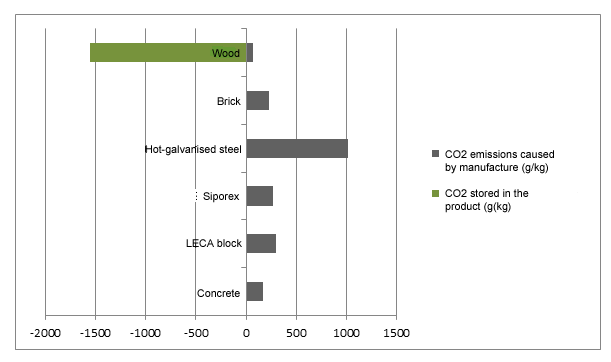Carbon is bound in wood structures for a long time
In buildings with wooden parts, the carbon stored in the wood is stored in structures that are long-term carbon stores. An average Finnish wooden house sequesters into its wooden structures about 30 tonnes of CO2 from the air. This is equivalent to the CO2 emitted by the driving of an average motorist over a ten-year period. Carbon can remain bound in such structures for hundreds of years.
The manufacture of wooden products generates comparatively few CO2 emissions. The amount of CO2 stored in wood is much more than the emissions caused by the manufacture of wood products. When, at the end of their life, wood products are converted to energy, they do not release into the atmosphere more CO2 than they stored while the wood they are made of was growing.
The use of wood also reduces CO2 emissions, as wood products replace products whose manufacture causes CO2 emissions. When replacing other products with wood, the effect of reducing CO2 emissions is often greater than the mere carbon-storing effect of the wood. This is because of the wood’s lightness and the fact that it often replaces materials that are considerably heavier than it and cause more emissions.
When a wall covering 1 m² is built of wood, a carbon dioxide store of about 52 kg is created. If a wooden wall replaces a similar concrete wall, CO2 emissions of about 100 kg caused by the manufacture of the concrete wall are also avoided.

CO2 emissions caused by the manufacture of different building materials (Source: Building Information Group RT environmental reports).